

When on May 18, 1654, Alexei Mikhailovich set off with his regiment for the Russo-Polish war, almost all of the highest Duma and court ranks joined the 25-year-old Tsar on his first campaign. Some of them must have been afraid they would not come back alive: The Tsar, after all, intended to capture Smolensk. But little did they know at the time that death awaited not them but those staying behind in Moscow - a pestilence was beginning to spread in the city.
Appearing from nowhere, the plague swept through Moscow – in late June more than 30 people died in the household of Boyar [nobleman] Vasily Sheremetev, who had left with the Tsar. There was panic, with people fleeing the city. No one knew what specific measures to take and no one had ever heard of quarantine. State institutions closed down. The boyars Mikhail Pronsky and Ivan Khilkov remained in charge in Moscow.
The Tsar was horrified. Brought up in an atmosphere of religious piety, he saw the plague as a "visitation from God" and punishment for some unknown sins. In July the epidemic was already in full spate – those who had fled Moscow had spread it throughout central Russia. The Tsar ordered Tsarina Maria, along with the newborn Tsarevich Alexei and the Tsar's sisters, to leave the Kremlin and go to the Trinity Lavra of St. Sergius monastery. They took with them the holy icons of Our Lady of Kazan and Venerable Sergius – along with everyone else, the Tsar's family believed that sacred objects would protect them against the pestilence.
But already in late August, when people in Moscow had started dying street by street, the icons had to be brought back to the city – many believed that the pestilence would cease as soon as the icons came back. The pestilence didn't cease but Patriarch Nikon, on the Tsar's orders, joined the Tsar's family "to protect it from the plague".
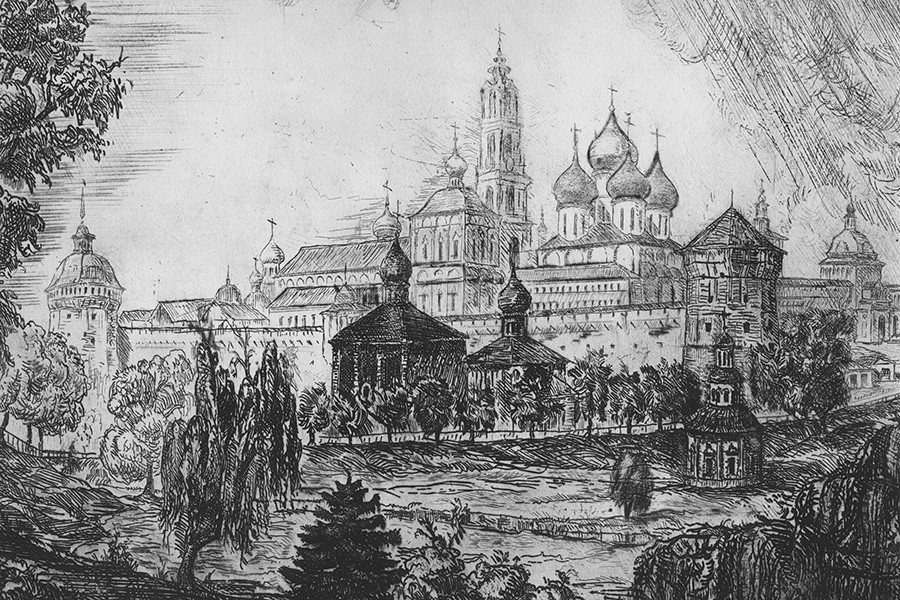
The Trinity Lavra of St. Sergius in the 17th century
Trinity Lavra of St. SergiusThe Tsar himself, as an educated person, understood the need to limit the spread of the epidemic. Guards at toll gates on the roads were ordered to send anyone who was on the move back to where they had come from, and to catch and execute those who tried to circumvent the turnpikes. But in Moscow, for example, the Kremlin had to be closed because almost all the Streltsy guards had died, and throughout the area people afflicted with the disease were still evading the turnpikes. The only place they didn't manage to do so was towards Smolensk. There, behind a quarantine line, were the Tsar himself and the army, and the quarantine was at its strictest. It comprised several cordons, and no-one with the infection managed to get into the area where the army was stationed.
The Tsar was most concerned about the money with which the soldiers were paid – everyone could have caught the plague from it. Alexei Mikhailovich ordered that the coins should be washed before being distributed.
Quarantine measures were also followed as regards the Tsar's family. On Sept. 7, when the Tsarina, along with her infant child and the Tsar's sisters, were staying on the River Nerl, Boyar Mikhail Pronsky in Moscow received a missive from them ordering him to stop corresponding with the Tsar's family and to write on all matters directly to the Tsar.
When the Tsar's family moved from place to place, the road ahead was checked for plague victims. On the way to the Kalyazin monastery, it emerged that a coffin containing the body of a noblewoman who had died from the plague had been transported across the road the previous day. It was decided to cover the junction with firewood for 20 meters in every direction, thoroughly scorch the soil and then carry the soil away. Only after this did the carriages carrying the Tsar's family continue on their way.
Thus did the Tsar's family, Patriarch Nikon and the Tsar himself manage to stay safe from the plague. In November-December the epidemic started to subside due to cold weather. But the Tsar only returned to the capital in February 1655 after thorough reconnaissance and delay. He was horrified by what he saw. The Kremlin's Spasskaya Tower had no bell and its clock had stopped - the bell had come down during a fire when there was no-one to put it out. Pristine snow lay on many streets. "The roads were covered in snow and there were no human footprints, only dogs'," wrote Patriarch Nikon about those days.
Having dismounted, the Tsar entered the Kremlin in conversation with the Patriarch. Streltsy guards swept the snow before him with wide brooms. The Tsar exuded calm and grace, as befits an Orthodox sovereign. But for the rest of his life Alexei Mikhailovich was apprehensive about plague and epidemics. Evidence of this is provided by his purchase of what were described as "unicorn horns" (actually, narwhal tusks) - it was believed that powder made from them could protect against any pestilence.
READ MORE: The weirdest medicine Russian tsars used

During the reign of Catherine the Great, plague arrived in Russia in the second half of 1770, having spread from the theater of war with the Ottoman Empire. The Empress, who had been vaccinated against smallpox two years previously, certainly knew how dangerous infectious diseases were.
It is therefore even more bizarre that a report by the commander of Russian forces in Moldavia and Wallachia, Lieutenant-General Christopher von Stoffeln, about the spread of plague in the town of Focșani, delivered to St. Petersburg on Jan. 8, 1770, was ignored. In St. Petersburg, it must have been hoped that the plague would stay in Moldavia and Wallachia, where Russians were being killed by bullets anyway. Following three more reports from von Stoffeln, an instruction was finally issued to isolate the troops from the local population, but in May von Stoffeln sent his last despatches - he did not survive to June.
The plague raged in the troops throughout the summer. In August 1770, even a worried Voltaire wrote to Catherine saying that her troops had been enfeebled by the plague. On Aug. 27, the Empress ordered Kiev Governor-General Fedor Voeikov to organize quarantines on the border. On Sept. 19, 1770, Moscow Governor-General Pyotr Saltykov received orders to put up a quarantine checkpoint at Serpukhovskaya Zastava turnpike. Preventative measures consisted of "fumigating" the clothes and belongings of travelers over a fire; in many cases the quarantine took only two days, and, as for army couriers on their way to St. Petersburg, they were detained for no longer than three hours - in other words, the measures prescribed by the Empress were not sufficient, and yet the local authorities didn't dare do anything without her knowledge and, by and large, appeared to underestimate the situation.
!['The bubonic plague in Moscow, 1771,' by Louis-Theodore Devilly [1818-1886]](https://mf.b37mrtl.ru/rbthmedia/images/2020.04/original/5e8a06b285600a61eb36e79a.jpg)
'The bubonic plague in Moscow, 1771,' by Louis-Theodore Devilly [1818-1886]
Public DomainIn November, quarantine checkpoints were already in place on all roads leading to Moscow, but it was too late. In December, the plague reached the city. "All kinds of precaution have been taken," Saltykov wrote to the Empress, without specifying what they were. The Empress had to sort things out herself again. She ordered that only a few entrances to the city should stay open, that junipers be burned in the streets and squares, and that priests already infected with plague be delegated to administer the last rites to those dying from the disease. But there was no question of not performing funeral rites for the dead, and that was another reason why the plague spread even more.
On Feb. 7, Saltykov reported that "all danger from the infectious disease is over", even as new hotspots of plague were emerging. Catherine no longer trusted Saltykov's reports and continued to issue new orders: To dispose of infected clothes, to allocate special cemeteries for plague victims outside the city… On March 31, the old capital was closed for entry and exit. To buy food, Muscovites had to go to markets set up on the outskirts of the city, with bonfires burning between sellers and buyers who had to talk to one another standing a substantial distance apart, while money had to be dipped in vinegar. These measures at least helped to stop the plague from reaching the northern provinces.
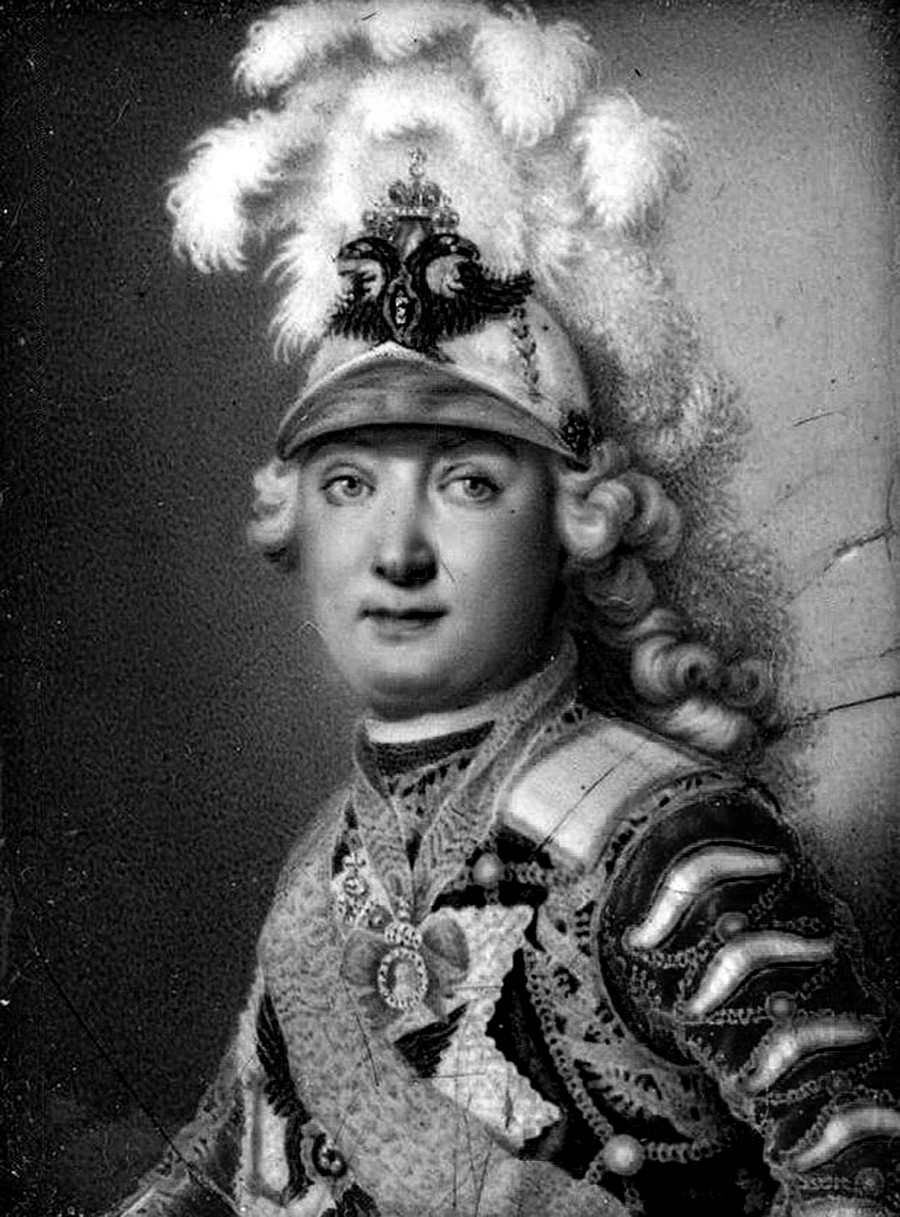
Grigoriy Orlov
HermitageBut in Moscow the most terrifying epidemic raged from July to November 1771. "Many corpses were lying in the streets: People either fell down dead or corpses were thrown out of houses. The police didn't have enough people or transport to carry away the sick and the dead, so often corpses remained inside houses for three or four days," wrote foreign doctor Johann Lerche. In Sept. 1771, the Plague Riot broke out; rioters killed Archbishop Ambrosius. Saltykov, and with him many grandees, fled the city; General Peter Eropkin was entrusted with restoring law and order in Moscow. The unrest had to be subdued with the help of troops.
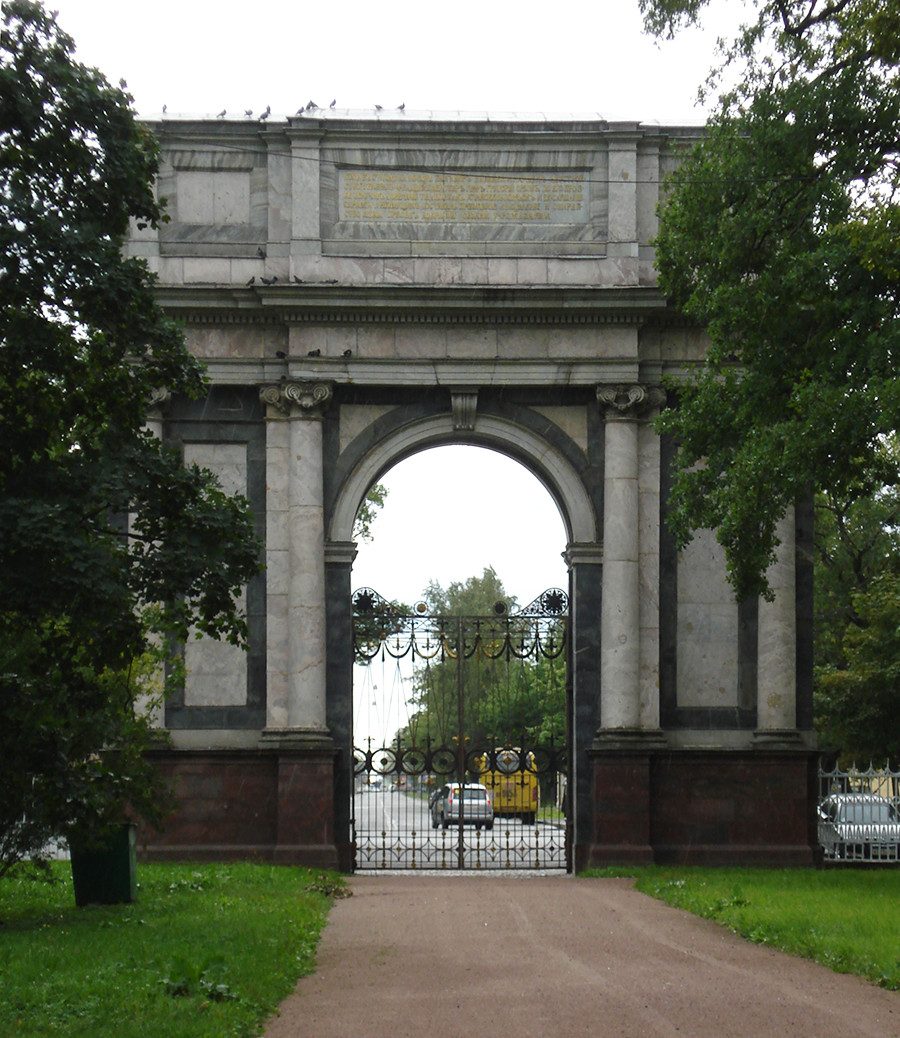
The Orlov triumphal arch
SERGiK73 (CC BY-SA 3.0)After the revolt was quelled, Catherine dispatched her favorite, Grigory Orlov, a person dear to her in every sense, to fight the plague in Moscow. He acted sensibly, gathering a commission of medical specialists and following their instructions. In April 1771 the city was divided into fenced-off areas and gradually it proved possible to isolate the infection - however, once again, cold weather helped a lot. Catherine was extremely pleased with Orlov's success and commissioned a triumphal arch to be erected in Tsarskoye Selo with the inscription "Moscow Saved from Calamity by Orlov". Over 60,000 people died in the Moscow region alone during the epidemic, and it was November 1772 by the time the plague was declared to be finally over.
READ MORE: What was so 'great' about Catherine II?
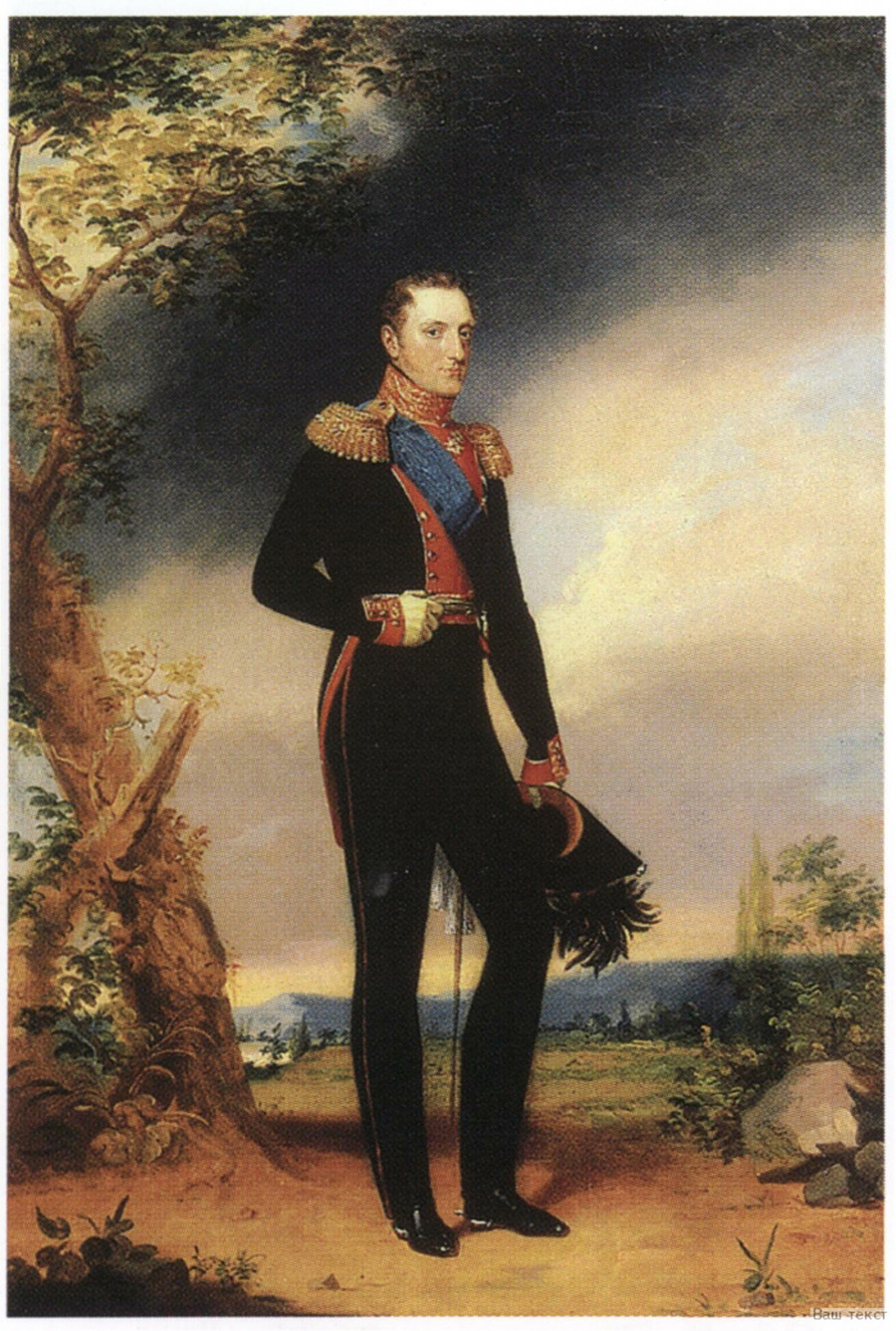
Nicholas I as a Grand Prince, by George Dawe
Russian MuseumThe third time that a mass epidemic swept the capitals, it got to St Petersburg despite quarantines imposed by Interior Minister Count Zakrevsky. The quarantines paralyzed the Russian trade. Once again, the epidemic had originated on the southern military fronts.
The strictest quarantine was immediately imposed on the imperial court in Peterhof (it was summer) - the Empress Alexandra Feodorovna was expecting a child and was in the last month of her confinement. As the emperor’s daughter, Grand Duchess Olga Nikolaevna, recalled, "no-one was authorized to enter Peterhof. The choicest fruit of that particularly warm summer had to be thrown away, as well as lettuces and cucumbers."
In June 1831 around 3,000 people died in St Petersburg in the space of two weeks. A quarantine was imposed on the city; feelings were running high as conspiracy theories and rumors circulated about mass poisonings and an enemy within.
"On approaching the Pyat Uglov crossroads, I was suddenly stopped by a man from a corner shop who shouted that I had thrown poison in his kvass [fermented beverage made from rye bread], which was standing in a pail by the door," wrote a contemporary eyewitness, a translator called Sokolov. A crowd demanded that he be searched for his flask of poison, stripped him of his clothes and was about to kill him when Sokolov was rescued by an officer who scattered the mob with his sword.
In similar circumstances, in June 1831, a crowd went on the rampage at a cholera hospital near Sennaya Square; several doctors and an administrative official were killed. The square with the rioters was surrounded by guards regiments, and then the Emperor, Nicholas I, arrived from Peterhof.

Nicholas I of Russia quelling a riot on the Sennaya Square (a detail of the monument to Nicholas I in St. Petersburg)
Kora27 (CC BY-SA 3.0)Alexander Bashutsky, who was adjutant to the governor-general of St Petersburg, wrote: "His majesty rose to his feet, threw off his dusty greatcoat, made a sign of the cross towards the church, lifted his arm high and, slowly lowering it, merely pronounced, in a long drawn-out manner, the words: "On your knees!". Another memoirist transcribed his words thus: "Do not bow to me but fall to your knees and bow to the Lord to plead his forgiveness for the grievous transgression you committed yesterday. You slayed an official who was trying to cure your brothers… I do not recognize you as Russians… ," the Emperor said. "A great trial has been visited upon us: contagion! Measures had to be taken to stop its spread: All these measures were taken according to my behests. That means your complaints are directed at me: Well, here I am! And I order you to obey," was how poet Vasily Zhukovsky reported his words.
The Tsar made several speeches to the people that day in different parts of Sennaya Square and the city. In each case Nikolay Pavlovich repeated that his elder brother, Konstantin Pavlovich, had died from cholera in Vitebsk a week earlier, on June 15, 1831, after an illness of less than 24 hours’ duration. The Emperor was evidently still in shock from the death of his elder brother, and this made his words persuasive. The cholera was a reality and not a conspiracy. The extremely tall, stern Emperor (he was 6’9” in height - even taller than Peter the Great), with his gift for oratory, succeeded in reversing the situation in the city with his addresses to the people. As Chief of Gendarmes Alexander von Benckendorff was to recall: “That day he visited all parts of the city and all the troops... He would stop everywhere and address a few words to commanding officers and soldiers; he was received everywhere with exultant cries, and everywhere his appearance led to peace and calm."
There were still individual incidents, of course, but the overall situation after the Emperor's intervention started largely returning to normal. The Emperor himself would adopt precautionary measures - after being out and about during the cholera epidemic he would wash scrupulously and put on a complete change of clothes, and only after that did he return to his family or go about other business.
But in September cholera broke out in Moscow. "I will come to share your dangers and your efforts with you,” the Emperor announced to Moscow Governor-General Prince Dmitry Golitsyn, and traveled to the old capital, staying there for more than a week. "Everyone is touched by his majesty’s benevolence and fearlessness in coming here," Moscow official Alexander Bulgakov wrote to his brother. "I’m dying to see his majesty - I want to see him even from afar; if it hadn’t been snowing, I would have gone to the Kremlin to gawp alongside the people."
In the Kremlin on Sept. 29, the Emperor prayed with Metropolitan of Moscow Filaret for deliverance from the epidemic, in the presence of a great gathering of people. From the epidemiological point of view, it was madness! "Why permit multitudes to gather in the Kremlin?" Bulgakov asked in outrage. "I’ve just got back from there, I saw the sacred procession, and there must certainly have been around 20,000 people. It's merely transmitting and spreading the infection!"
But there was no flare-up, but officials and doctors continued their work with greater vigor as a result of Nikolay's visits to institutions and hospitals, where he fearlessly entered cholera wards and spoke to patients. The sick were rounded up in the streets along with vagrants and drunks as they staggered around spreading the disease. Meanwhile, the Emperor received several influential merchants. "According to reports, cholera has taken 20,000 lives in Russia… I visited the apple market myself, and the fruit is now unsavory; I suggested that trading be temporarily halted," the Emperor told them. He tried to see to it that crowds did not congregate at least in the markets. The merchants said it would ruin them, but the Emperor ordered Governor-General Prince Dmitry Golitsyn to allocate funds to support them.
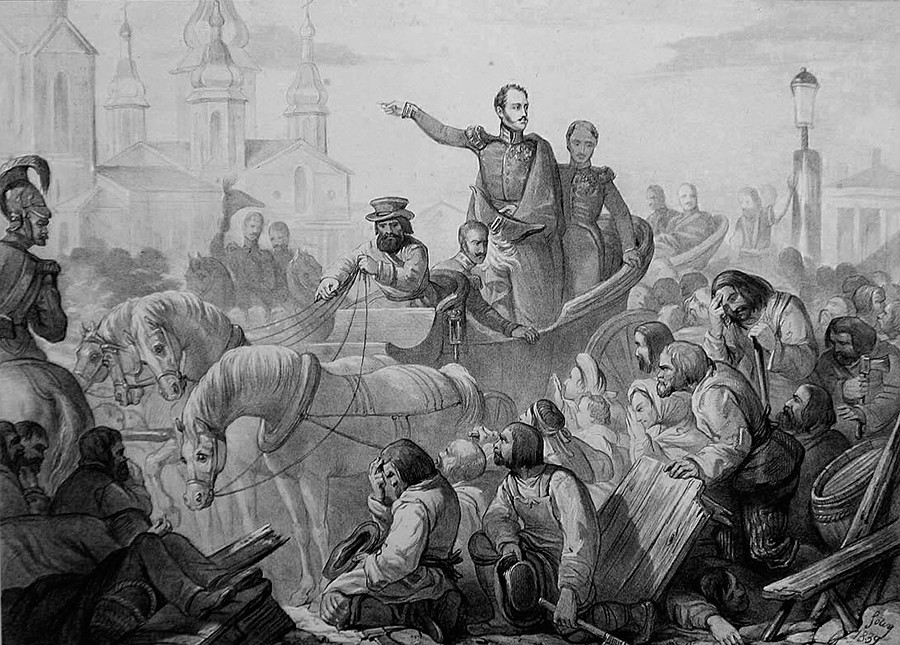
Nicholas I of Russia quelling a riot on the Sennaya Square
Public domainSanitizing measures were adopted in the palace where the Tsar was staying. Anyone entering the Tsar’s quarters was compelled to rinse their hands in bleach and wash their mouth out with it too. In the meantime, the whole of Moscow was monitoring the state of the Emperor's health; any indisposition or headache that he experienced, particularly after eating, gave rise to a string of rumors and a host of anxieties. Meanwhile, the Emperor was attending evenings and dinners with the nobility and mixing with the local aristocracy, even deriding cholera. "And he coldly clasps the hand of the plague," was Alexander Pushkin’s take on the Emperor's fearless conduct in a poem titled "The Hero". It was inscribed "September 29, 1830. Moscow" even though the poet was in quarantine in Bolshoye Boldino at the time. He seems to have wanted to be with the Tsar in spirit.
Nikolay Pavlovich departed for St Petersburg on Oct. 7, stopping on the way for three days of quarantine in Tver. Winter was approaching, and the cholera epidemic in Moscow was on the ebb.
If using any of Russia Beyond's content, partly or in full, always provide an active hyperlink to the original material.
Subscribe
to our newsletter!
Get the week's best stories straight to your inbox